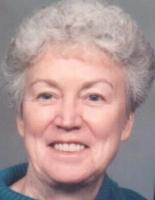ASHTABULA, Ohio – In the spring of 1970, Thomas Talcott, served in the 137th infantry of the Ohio Army National Guard in Ashtabula, and vividly remembers the events he witnessed in Kent during the time of the May 4, 1970 shootings at Kent State University.
Talcott, now 75, was working at Sherwin-Williams Chemical Plant in Ashtabula but had to miss work when he was called up for active duty on May 1 to patrol trucking terminals in Cleveland during a Teamsters strike. The Guardsmen had to deal with several challenges throughout the next few days, including about 200 rock-throwing strikers.
"Those (truckers) were scary dudes; they were old-school truckers and they were pretty serious about their strike," Talcott said. "On the morning of the shootings, we were facing down Teamsters."
An hour or two later, his unit was ordered to the Armory in Shaker Heights in preparation for quelling student riots at Kent State University.
Driving through the city of Kent, Talcott said, "we saw firsthand the destruction and realized the rioters could be dangerous," he said. "Buildings were on fire everywhere you looked."
'Years of civil unrest'
As Talcott's convoy moved through the city, children booed the Guardsmen and "saluted us with their middle finger," he said. "People were yelling and screaming at us. It was the culmination of five years of civil unrest. It was scary."
Just a mile or two from the KSU campus, at about 12:30 p.m., Talcott's convoy was stopped.
"We didn't know why, but we turned back," he said. "We didn't know there had been a shooting."
Talcott and about 160 of his fellow Guardsmen were sent back to Shaker Heights Armory and herded into a large room and told to take a seat. They were then briefed on what had just happened on the Kent campus – four students dead, nine injured in gunfire. Some of the students who were shot had been protesting against President Richard Nixon's Cambodian campaign, which he had announced on television four days earlier.
"We were shocked," he said. "Many of us were Kent students, or our brothers, sisters or girlfriends were students. We were about the same age as the students who were killed. It was like, 'Oh my God! They are going to kill my brother or girlfriend!' That made it all the more scary."
An African-American Guardsman then stood up and said, "If they will kill white college students, we don't have a chance."
'Three bullets in his ... rifle'
Talcott said that day was one of the most traumatic days of his life.
"The National Guard wasn't trained to deal with rioting college students," he said. "We heard that many students didn't believe the Guardsmen's guns were loaded, but they were — each Guardsman had three bullets in his M-1 rifle."
Although Talcott wasn't on the campus when the actual shootings took place, it was not his unit's first dealings with riots. Four years earlier, they were called to the Hough riots in Cleveland. During the Hough riots, four African-Americans were killed and 50 other people injured.
In 1968, they went to the Glenville riots in Cleveland. Fire was exchanged for about four hours between the Cleveland police and Black Nationalists of New Libya, a black power group.
"In all of these riots, kids shoot off firecrackers and there's a lot of noise," Talcott said. "It's scary being surrounded by rioters, yelling and throwing rocks and bottles at you; and, there's always an instigator in every crowd, urging them on."
The tragedy at KSU was a watershed moment for the country divided about the war in Vietnam. The shootings forced Kent and other colleges and universities to close that day. Kent remained closed all summer and didn't reopen until fall quarter.
"It was a sad time in U.S. history," Talcott said. "Very sad time."


























Commented
Sorry, there are no recent results for popular commented articles.